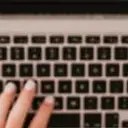Are there things that you need to do, but just never seem to have time for? If so, there’s a good chance that procrastination is the secret (or not-so-secret) culprit. Mark Twain is credited with the procrastination-busting strategy: Eat a live frog first thing in the morning and nothing worse will happen to you the rest of the day. Meaning: do immediately the thing you’re most likely to put off. Despite his fame for it, there’s no evidence that Twain ever uttered the quote, but it’s nevertheless a good strategy to reduce the productivity-killing impact of procrastination. Here are four steps to help you identify, prepare, and eat your frogs so that you can start getting more accomplished each day.
What is a frog?
Frogs are those important yet daunting or unpleasant tasks that invite you to exercise every procrastination strategy you know. Imagine the last time you said, Yeah… I’ve been meaning to get around to that… You were almost certainly talking about a frog. The problem with putting off frog tasks is that the more you procrastinate on them, the more everything else on your to-do list gets delayed as well. Eating your frog first thing in the morning frees you from the pressure of a dreaded task for the rest of the day, and makes it easier to knock out other tasks sans-procrastination.
1. Identify your frog(s)
In addition to thinking about what tasks you’re most likely to procrastinate on, consider these prioritization factors for deciding which frogs should come first.
Is the task truly important?
Consider whether the task meets or advances larger business or professional goals.
Are there other tasks dependent on this one?
Prioritize tasks that unlock progress on larger projects or goals.
Consult time tracking data.
What tasks historically take the most time or effort? Prioritize those.
Focus on outcomes.
Busyness and productivity are not the same thing. Prioritize activities that will yield the best results.
2. Make a to-do list the day before
Many prioritization tips suggest making a list first thing in the morning. But even doing that delays eating your frog and can lead to procrastination (after all, who wouldn’t prefer to make a list than eat a frog?). Make your to-do list at the end of each day so that you know exactly what to do when you wake up the following day.
It also helps to figure out the productivity style that fits you best and use it to effectively arrange your list. Are you task-oriented or time-oriented? Prone to distractions, or able to focus amidst the chaos? You’ll find you get a lot more done if you’re not working at odds with yourself.
3. Schedule your frogs
You should tackle your worst/most important task first thing in the morning. So scheduling frogs is pretty straightforward, right? Well, not if you have more than one frog for the day. If there are two or more frogs, eat the ugliest first. To determine what ugly means in this scenario, consult the tips above for how to prioritize high-priority tasks. This is where time tracking data comes in particularly handy. If you have records on how long tasks typically take, you can manage your schedule to create the right amount of time first thing in the morning to finish eating the frog without interruption.
Here it’s also worthwhile to schedule blocks of time in which you can focus and single-task your frogs to completion. Remember, the point of eating the frog is to minimize time wasting. With a frog staring you in the face, any distraction is going to present a serious temptation to accidentally side track or procrastinate.
4. Develop a taste for frog
Beyond single instance productivity, the larger goal of eating frogs is to develop time management habits that eliminate procrastination and time wasting. If you develop a consistent routine of eating your frog first thing every day, you’ll not only find yourself getting more done, but you may also start looking forward to the satisfaction of knowing you can and will accomplish your hardest, most important tasks every day.
![Eat your Frog! Get MORE Done with Smart Prioritization. [Guide]](/static/image?src=https%3A%2F%2Fcdnblog.unrubble.com%2Fpayload-unrubble-images%2Fed145b6f-6e51-4f34-b6e8-5cfdd078245a_large.jpg&width=1440&height=540&fit=cover&position=center&quality=65&compressionLevel=9&loop=0&delay=100&crop=null&contentType=image%2Fwebp)





